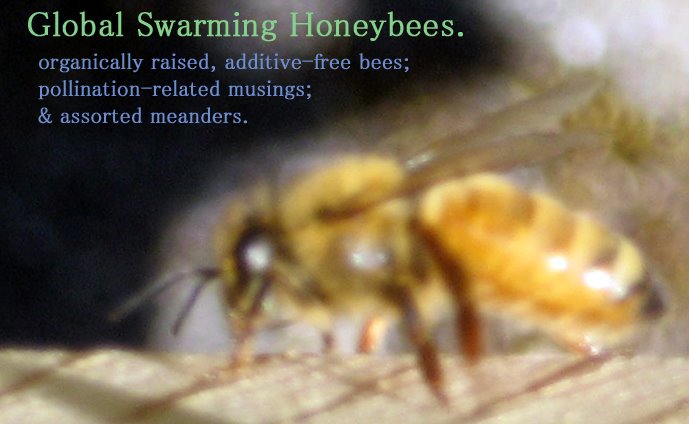


8.07.2008
As if from nowhere...
8.06.2008
Berry Picking or Sitting at Desk?
Berry Picking or Sitting at Desk?
Berry Picking or Sitting at Desk?
Berry Picking or Sitting at Desk?
'Twas a tough decision; I did what had to be done.
Thanks to the honeybees, wasps, flies, moths and other pollinators who make such delicacies possible.
8.05.2008
Recent Things (Early August)









Jellyfish in a Coalmine
From this week's New York Times article, Stinging Tentacles Offer Hint of Oceans' Decline:
“These jellyfish near shore are a message the sea is sending us saying, ‘Look how badly you are treating me,’” said Dr. Josep-María Gili, a leading jellyfish expert, who has studied them at the Institute of Marine Sciences of the Spanish National Research Council in Barcelona for more than 20 years.
The explosion of jellyfish populations, scientists say, reflects a combination of severe overfishing of natural predators, like tuna, sharks and swordfish; rising sea temperatures caused in part by global warming; and pollution that has depleted oxygen levels in coastal shallows.
8.04.2008
A Bitter Pill from Bayer
A highly worthwhile article appeared in the L.A. Times on July 30th regarding the possible link between the "disappearing honeybees" (Colony Collapse Disorder) and Bayer pesticides. Here's a taste:
"It's likely that most people have never heard of Gaucho. And no, it's not a South American cowboy. I'm talking about a pesticide.Excerpted from Buzzzzzzzz kill by Al Meyerhoff, Los Angeles Times, July 30, 2008
"There is increasing reason to believe that Gaucho and other members of a family of highly toxic chemicals -- neonicotinoids -- may be responsible for the deaths of billions of honeybees worldwide. Some scientists believe that these pesticides, which are applied to seeds, travel systemically through the plant and leave residues that contaminate the pollen, resulting in bee death or paralysis. The French refer to the effect as 'mad bee disease' and in 1999 were the first to ban the use of these chemicals, which are currently only marketed by Bayer (the aspirin people) under the trade names Gaucho and Poncho. Germany followed suit this year, and its agricultural research institute said it concluded that the poisoning of the bees was because of the rub-off of the pesticide clothianidin (that's Pancho) from corn seeds.
So why did the U.S. Environmental Protection Agency in 2002 grant an 'emergency' exemption allowing increased use of Gaucho -- typically invoked during a major infestation -- when only a few beetles were found in blueberries? Why did the agency also grant a "conditional" registration for its close relative, Pancho, allowing the chemical on the market with only partial testing? And why is the agency, hiding behind a curtain of "trade secrets," still refusing to disclose whether the additional tests required of companies in such cases were conducted and, if so, with what results?
"Therein lies a tale. Most pesticides, we're told, are safe. So we add about 5 billion pounds a year of these deadly chemicals to our world, enough to encircle the planet if it were packaged in 100-pound sacks...."
Read the whole important thing right here.
7.30.2008
Butterflies and Caterpillars of Note
Summer of '08 has brought many close encounters with caterpillars and butterflies; here's a sampling.




Unidentified caterpillar.





If you've made it this far, you're ready for a little game. Check out the first pic below and test your critter-finding skills. Click on the photo for a larger version—see anything unusual?
If you looked carefully, you might have noticed this fellow (or gal). A great example of cryptic coloration (camouflage). A fine example, also, of how an eye-spot can present a scary-looking, don't-eat-me message to potential predators (that's not the caterpillar's actual eye). As you can see, the caterpillar has begun building its cocoon.
For what it's worth, my preferred field guides for this genre are Caterpillars in the Field and Garden (Allen, et al.) and Butterflies Through Binoculars—The East (Glassberg).
7.29.2008
Recent Things












7.28.2008
Joe-Pye Weed

According to the same book, first published by Scribner in 1893, Joe Pye was an American Indian who cured typhus fever in New England using this plant.














